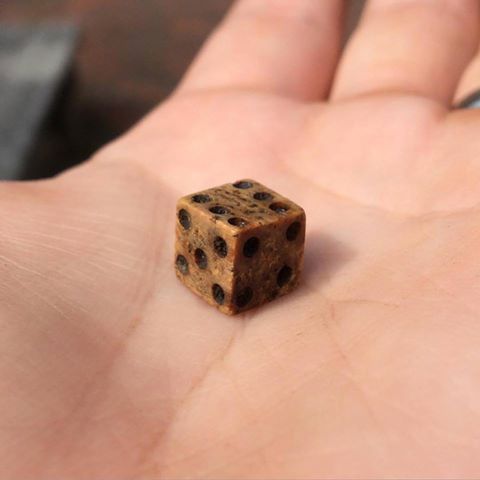An archaeological dig is underway at Old North’s Washington Garden in Boston’s North End. Leading the survey is City Archaeologist Joseph Bagley with teams of volunteers including those shown above from the Old North Foundation that is partnering with the City on the dig.

Artifacts found so far include a whole bone dice, stoneware fragments, buttons, tobacco pipes, jewelry pieces and glass bottles. The two-week survey will finish up its first phase this week, exploring the buildings’ backyards and water cistern. Future phases may include widening the dig area to include potential privies or outhouses nearby.
“This is a wonderful opportunity for us to celebrate and explore the daily lives of the many immigrant peoples that lived in these apartments,” said Bagley. “Until the 1930s, the garden was the location of three brick apartment buildings built in the 1830s, so this survey will give us a glimpse into over a hundred years of Boston’s history.”
“Old North continues to work closely with City Archaeologist Joe Bagley as we plan for a major restoration of the church and campus in time for our 300th birthday in 2023,” said Rev. Stephen Ayres, Executive Director and Vicar of Old North Church.
Working with the Old North Foundation, Archaeologist Bagley provided some research on the history of the Old North dig site. The garden was formerly 1-3 Unity Court. In 1830, a lot of land that spanned Salem Street to Unity Court was subdivided into six lots, three on Salem and three on Unity Ct. with a shared well/pump in the center of the properties. The first owner of 1 and 2 Unity Court was Timothy Carter, who was the first bookseller at the Old Corner Bookstore. The properties were rapidly sold to a long list of owners, but that is almost irrelevant, as it is the occupants of the house that leave behind the artifacts. The first occupants of the tenements were predominantly of English descent, as waves of English immigrants, usually single male laborers, were the dominant immigrants to arrive to the North End after the war of 1812. Irish immigrants start to appear in the home by the 1840s and continue until the turn of the 20th century. Jewish immigrants also appear in the mid 1800s. From 1900 and onward, both the owners and occupants of the buildings were of Italian descent.
The Old North Foundation and the Beacon Hill Garden Club will reconfigure the garden into an outdoor classroom featuring 18th century plantings and a large glass-and-water feature etched with Longfellow’s poem: “Paul Revere’s Ride.” Future work on the Longfellow Garden is supported by the Old North Church Foundation and the Beacon Hill Garden Club. Grant funding is also under review by the Edward Ingersoll Browne Fund of the City of Boston.
Bagley and his team conducted an archaeological survey in 2013 behind the 1715 Clough House at 21 Unity Street, also owned by Old North Church. On this previous Old North Church survey, they found more than 40,000 artifacts dating back 300 years.
Follow the Old North survey and other work on the City’s archeology Facebook page.
Slideshow photos by Matt Conti. View more at MattConti.com.




It was wonderful to participate in the dig last night. I want to be an archaeologist in my next life! Thank you Catherine Matthews, Renie Pavilon et al for a fascinating glimpse into old Boston and Old North!